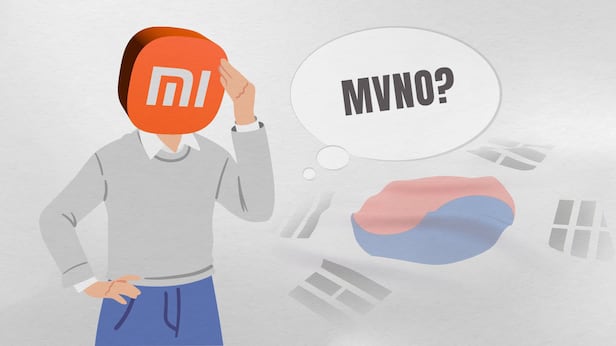
Since establishing its South Korean subsidiary, Chinese tech firm Xiaomi has been working to expand its presence in the market. But with offline sales channels proving difficult to secure, the company is now turning to budget mobile carriers as an alternative route. Still, experts say breaking into a market dominated by Korea’s major telecom providers will not be easy.
According to industry sources on April 8, Xiaomi is trying to boost its stagnant smartphone market share in Korea by targeting the budget carrier segment. Its local distributor Sptiz recently launched its own low-cost mobile brand, Sptiz Mobile, using KT’s network. This follows a January promotion in which Xiaomi bundled the Redmi Note 14 Pro 5G with a budget mobile plan. Now, its distributor has officially entered the mobile service business.
In that January promotion, Xiaomi partnered with KT M Mobile to offer the Redmi Note 14 Pro 5G for free when users subscribed to a 21,000-won monthly plan under a two-year contract. More recently, Spitz Mobile introduced the “Xiaomi Choice plan,” which offers Xiaomi home appliances—such as 50-inch TVs, robot vacuums, and air purifiers—as incentives for new customers. Industry insiders expect Xiaomi to continue bundling its future smartphone models with budget mobile plans as a core part of its local marketing strategy.
This approach is expected to generate synergy with Xiaomi’s first offline store in Korea, set to open in the first half of the year. Customers visiting the store will be able to try out products firsthand and sign up for budget plans offered by Spitz Mobile. A source in the telecom industry said, “Once Xiaomi’s first offline store opens, we expect to see new budget plans bundled with its smartphone lineup.”
A device industry insider noted, “With the three major telecom firms focused on distributing Samsung and Apple phones, Xiaomi likely struggled to find stable sales channels. Given that Xiaomi’s core customer base in Korea is mid- to low-end users who prefer unlocked phones, it makes sense they would turn to budget carriers.”
Still, some argue that Xiaomi’s strategy may face limitations in South Korea. With strong demand for premium smartphones, low-end models have limited appeal. Even within the mid-range segment, Samsung’s Galaxy A series dominates through established carrier networks, leaving little room for challengers. Xiaomi also trails Samsung in after-sales service, which is seen as another disadvantage.
Ahn Jung-sang, adjunct professor at Chung-Ang University’s Graduate School of Communication, said, “Xiaomi’s mid-range strategy tied to budget carriers looks more like a last resort in a tough situation. To gain real traction in Korea, it must secure distribution through telecom channels and improve sales of high-end models like the Xiaomi Ultra 15.” He added, “No matter how good Xiaomi’s cost-performance ratio is, marketing won’t go far in Korea, where the unlocked phone market is underdeveloped.”
Meanwhile, according to market researcher Counterpoint Research, Xiaomi’s smartphone share in Japan jumped from less than 1% in 2023 to 6% last year—thanks to Japan’s more developed unlocked phone market.
Xiaomi’s recent push into the budget carrier segment is widely seen as a response to its struggles in Korea’s telecom-driven smartphone market. While the company launched the Redmi Note 14 through the three major carriers earlier this year, follow-up models such as the Poco X7 and Xiaomi Ultra 15 have only been sold online. Some industry sources say weak sales may have kept these newer models out of carrier stores.



